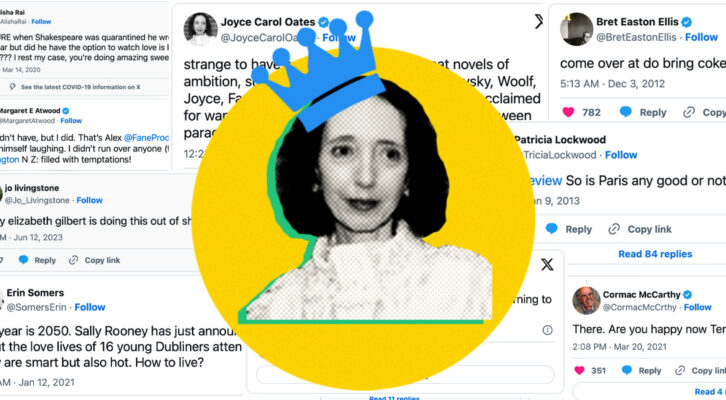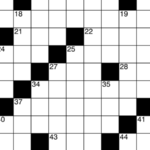How much is it worth?
My students love to ask this question about the works of art we discuss. It’s the driving question behind the entire art world, as how much somebody is willing to pay for an object determines its value, and therefore its price at auction or from a dealer, or whether a deep-pocketed collector acquires it, or if it enters a museum. It’s why the art world makes such great fodder for crime novels, as someone – for reasons personal, financial, or sinister – is almost always willing to pay whatever it takes for the object they want.
The art world encompasses a wide array of spaces, and I’ve spent my career in almost all of them. Auction houses, private galleries, historical societies, fine art museums, and now as a professor, you name it, I’ve worked in it. This world has two sides: the shiny, monied one, that of hushed, marble floors, of gilded frames, of cocktail parties and galas, and its inverse, the Byzantine-like labyrinth of back door deals, of looted cultural property that disappears on the black market, of daring heists. I explore both sides in my latest Gilded Gotham mystery novel Treachery on Tenth Street, using the art world of late 19th century New York as the backdrop for my sleuthing duo of Five Points born millionaire, Daniel McCaffrey, and society girl turned journalist, Genevieve Stewart, as they race to figure out who is killing the city’s most prominent artists’ models.
In that spirit, I’ve gathered a few crime novels with a plot that revolves around art or the art world here. They range from those with an artist protagonist, to those that center on an individual work, to those about a theft or a quest for that particular piece someone will go to any lengths, including murder, to possess.
How much is a work of art worth? The answer is always the same: however much someone is willing to pay.
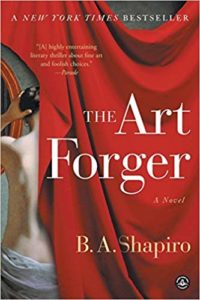
The Art Forger by B. A. Shapiro
In this novel based on one of the greatest real art heists of all time, the 1990 theft of 13 works from the Isabella Stewart Gardner Museum in Boston, art forger Claire Roth makes a Faustian deal to copy one of the stolen paintings, Edgar Degas’s After the Bath, to secure herself a much-needed gallery exhibition. Meticulously researched, this novel blends art history, romance, and suspense as Claire slowly uncovers the real story behind the painting.

Portrait of a Thief, by Grace D. Li
As author Grace D. Li states in this book, “museums never like to grapple with their history of colonialism.” And yet in this art heist novel, five Chinese Americans in their 20s form a dream team to force museums to do just that, by attempting to steal back a group of Chinese artworks and repatriate them to their country of origin. Both a moving meditation on the diasporic experience and a condemnation on the very real damage done by colonialism to cultural properties, this novel provides a refreshing, modern take on the well-established heist trope.
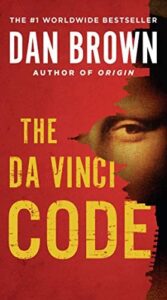
The Da Vinci Code, by Dan Brown
My agent and I have a long-running argument about whether this is primarily an art-crime book or a cryptology book, though of course it’s both. Using what is arguably the most famous painting in the world to move the plot forward, Leonardo Da Vinci’s Mona Lisa, Brown peppers this ultimate page-turner with tons of art world locales, other Old Master paintings, and shadowy figures. The Louvre Museum, a dead curator, and secret messages in paintings abound.

The Maltese Falcon, by Dashiell Hammett
A Noir classic, this hard-boiled detective story is centered around what is rumored to be a priceless jewel-encrusted gold statue of a falcon. The statue is, of course, a MacGuffin, a mere plot device rather than an object of any real value. But the book, which follows detective Sam Spade around the dark streets of San Francisco, illustrates just how far people will go for such a prized object. Fun fact: the prop statue used in the 1941 film starring Humphrey Bogart sold for over 4 million dollars at auction in 2016, proving that any item really is only worth what someone will pay for it.
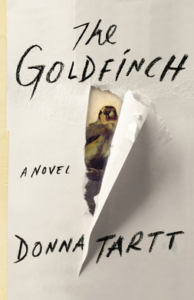
The Goldfinch, by Donna Tartt
One could argue that the titular painting in this novel, The Goldfinch (1654) by Dutch artist Carel Fabritius, serves as a MacGuffin as well, but here the connection between the painting and the characters’ motivations are deeper, particularly that of main character Theo Decker. Starting with an explosion at the Metropolitan Museum in New York that leads to Theo’s theft of the painting, the novel shifts locales along with him, detailing how Theo deals with his trauma and loss through the painting, as well as through substance abuse. For a time Theo occupies the shadowy world of antique and art forgery, and while this book is less overtly a suspense novel than Tartt’s 1993 The Secret History, it still blends elements of crime fiction with literature deftly, so much so it was awarded the 2014 Pulitzer Prize for fiction.

The Masterpiece, Fiona Davis
Toggling between the bohemian glamour of New York City in the 1920s and the city’s grime and disarray in the 1970s, The Masterpiece follows the lives of two women, Clara and Virginia. While Clara is a painter and illustrator teaching at an art school within Grand Central Terminal in the 1920s, Virginia is a recently divorced woman working at the information booth of the Terminal in the 1970s. When Virginia stumbles across the abandoned art school within the Terminal, she finds a watercolor signed “Clyde,” and embarks on a quest to both find the identity of the painter and one to save the threatened Terminal. Highlighting the important work of historic female artists and historic preservationists, The Masterpiece explores seemingly separate aspects of the art world and mixes them together in a satisfying, suspenseful way.
***








